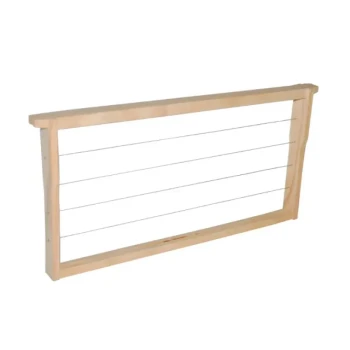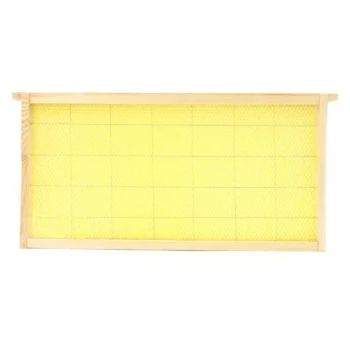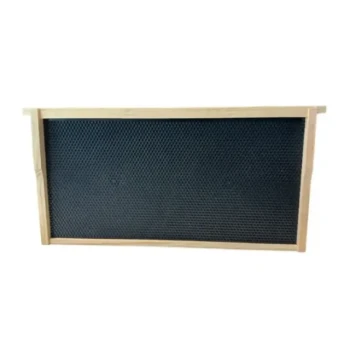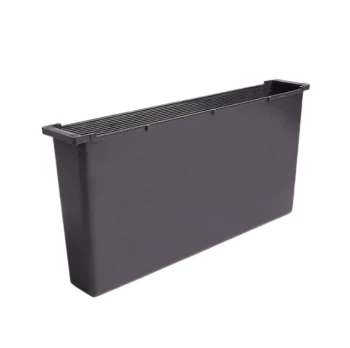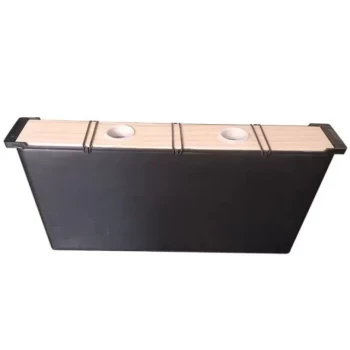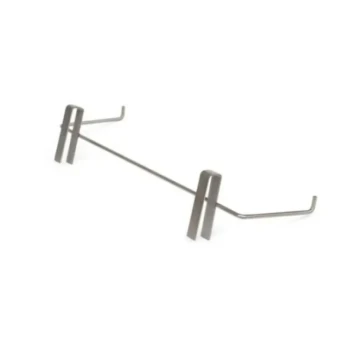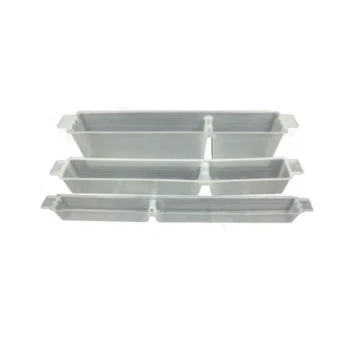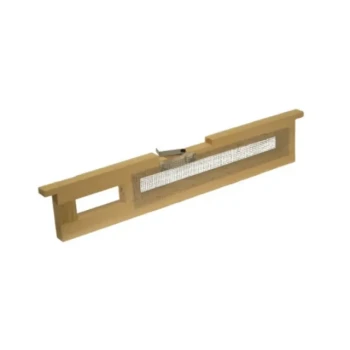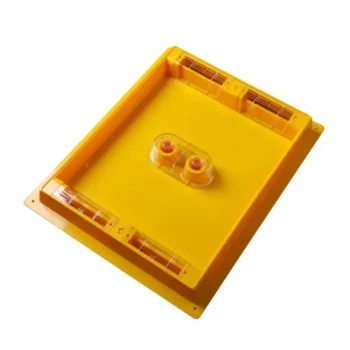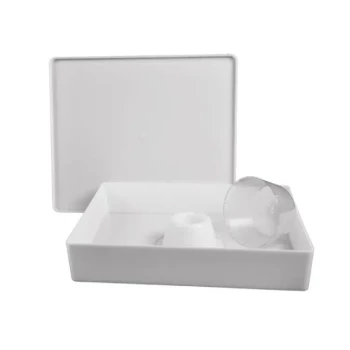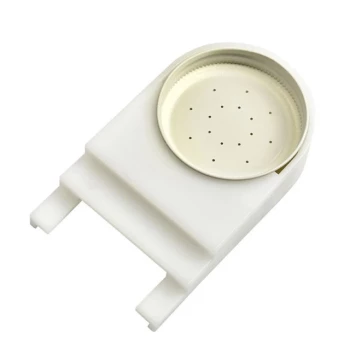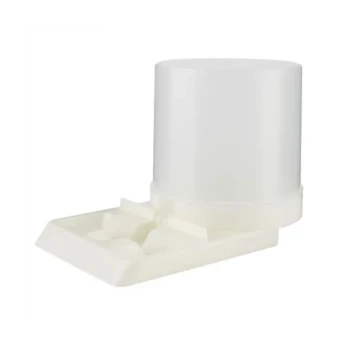As a general rule, you should begin replacing your brood box frames when they are four to five years old. The primary reason is that old comb acts like a sponge, accumulating pathogens, pesticides, and residues from in-hive treatments over time, which can negatively impact colony health and vitality.
The core principle is not about the age of the wood and plastic but the hygiene of the beeswax comb. Regularly rotating out old comb is one of the most effective preventative health measures a beekeeper can take, directly reducing the disease and chemical load on the colony.
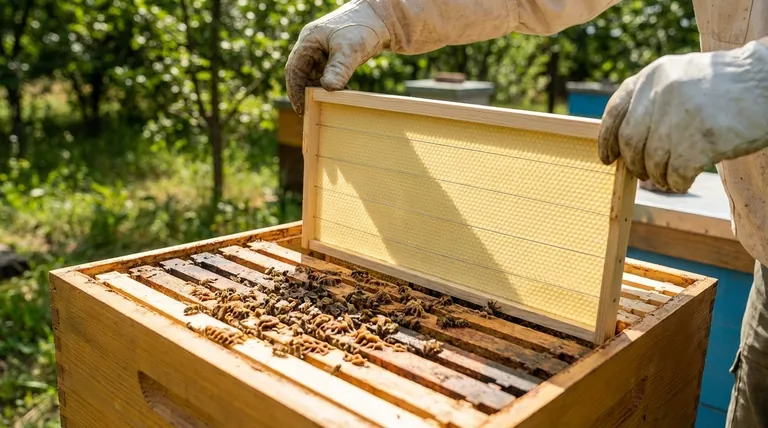
Why Old Comb Becomes a Liability
Over years of use, the wax comb in your brood chamber—the nursery of the hive—gradually degrades from a clean environment to a potential source of problems. Understanding these factors is key to managing a healthy hive.
The Buildup of Pathogens
Each time a new bee emerges from a cell, it leaves behind a pupal cocoon. Over many generations, these layers accumulate, darkening the comb and creating a reservoir for pathogens like the spores that cause American Foulbrood, European Foulbrood, and Chalkbrood.
Absorption of Chemicals
Beeswax readily absorbs fat-soluble substances. This includes agricultural pesticides the bees may encounter while foraging and, just as importantly, the miticides beekeepers use to control Varroa mites. Over several years, these residues can build up to levels that harm bee health and fertility.
Reduced Cell Size
While a minor factor, the buildup of old cocoons can slightly reduce the internal volume of the brood cells. This may result in the colony raising slightly smaller bees, which can impact their overall robustness and productivity. Dark, thick-walled cells are a clear sign of an aged frame.
A Practical Frame Rotation Strategy
A systematic approach prevents you from having to replace all your frames at once, which would be a massive shock to the colony. The goal is a gradual, rolling replacement.
The Annual Rotation Cycle
The most effective method is to replace 20-25% of the frames in each brood box every year. For a standard 10-frame box, this means swapping out two or three of the oldest frames annually. This creates a continuous cycle where no frame remains in the hive for more than four or five years.
Where to Place New Frames
Never place an empty foundation frame in the middle of the brood nest, as this can divide the cluster and chill the brood. The best practice is to place new frames in positions 2 and 9 (in a 10-frame box). The bees will naturally draw out the comb there without disrupting the queen's core laying pattern. The oldest frames are typically found and removed from the outer edges.
When to Perform the Replacement
The ideal time to introduce new frames is on a warm, sunny day during a strong spring or early summer nectar flow. Good weather minimizes hive stress, and the incoming nectar provides the resources bees need to produce wax and build out the new comb quickly.
Understanding the Trade-offs
While beneficial, frame rotation is not without its costs. Being aware of the trade-offs allows you to manage the process wisely.
The Cost in Bee Energy
Producing beeswax is an energy-intensive process for bees. It is estimated that bees consume 6-8 pounds of honey to produce just one pound of wax. Replacing frames forces the colony to expend significant resources that could have otherwise gone toward honey production or population growth.
Risk of Disrupting the Brood Nest
If done incorrectly or at the wrong time of year, adding new frames can be disruptive. Placing them in the center of the brood area can isolate the queen and lead to a temporary halt in egg-laying or chilled brood. This is why placement toward the outside is critical.
Brood Frames vs. Honey Super Frames
This entire strategy applies specifically to brood frames. Frames in your honey supers, which are used only for storing honey and never for raising brood, do not accumulate the same level of pathogens. As long as they are clean and structurally sound, honey super frames can be used for many more years.
Making the Right Choice for Your Hive
Implementing a frame rotation plan should be tailored to your beekeeping goals and the state of your equipment. Use a permanent marker to write the year on the top bar of every new frame to make tracking easy.
- If your primary focus is disease prevention and long-term health: Implement a systematic annual rotation of 2-3 of the oldest frames in each brood box every spring.
- If your primary focus is minimizing disruption and cost: Mark your frames by year and only replace the oldest ones (4-5+ years) during a strong nectar flow to ensure they are drawn out quickly.
- If you have just acquired an old, established hive: Prioritize replacing the darkest, oldest-looking combs in your first season to give the colony a clean foundation.
Treating your frames as a renewable resource is a proactive investment in the long-term health and resilience of your honey bee colonies.
Summary Table:
| Key Aspect | Recommendation |
|---|---|
| Replacement Cycle | Every 4-5 years for brood frames |
| Annual Rotation | Replace 2-3 frames (20-25%) per brood box each year |
| Best Time | Warm, sunny day during a strong spring/summer nectar flow |
| Ideal Frame Position | Place new frames in positions 2 and 9 (in a 10-frame box) |
| Primary Reason | Reduces pathogen and chemical residue buildup in old comb |
Ready to implement a proactive frame rotation strategy?
As a leading wholesale supplier to commercial apiaries and distributors, HONESTBEE provides the durable, high-quality hive frames and foundation you need to maintain optimal colony health. Our equipment is designed to withstand years of use, supporting your systematic replacement plan.
Contact our expert team today to discuss your bulk equipment needs and ensure your operation is built on a foundation of health and productivity.
Visual Guide
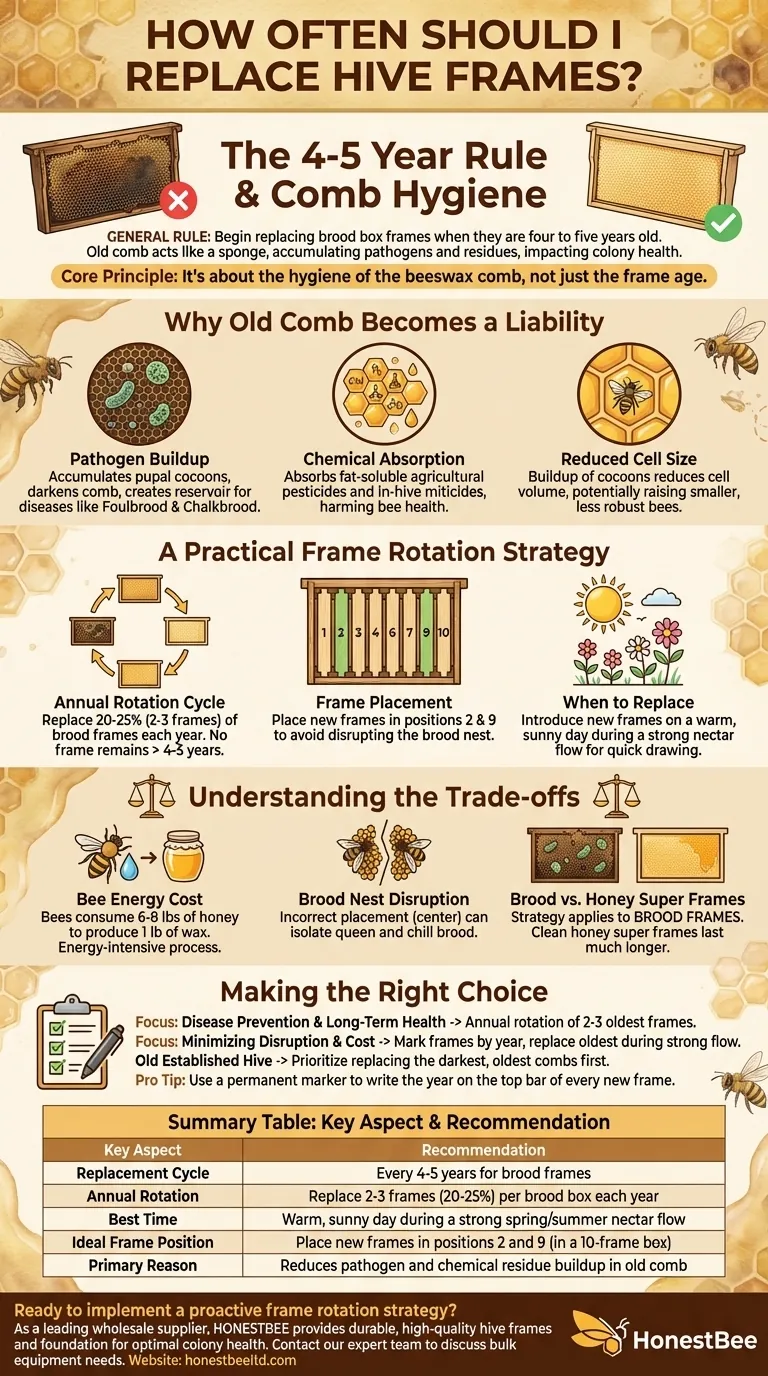
Related Products
- HONESTBEE Wired and Assembled Wooden Bee Frames Foundation for a Thriving Hive
- Assembled Wooden Bee Frames with Beeswax Foundation Ready to Use by HONESTBEE
- Assembled Wooden Bee Frames with Plastic Foundation for Durability and Convenience by HONESTBEE
- Professional In-Hive Bee Feeder HONESTBEE Frame for Beekeeping
- 3.5L Plastic Beehive Frame Feeder Deep Frame Water Feeder for In Hive Use
People Also Ask
- How should you dry bee frames after cleaning? Prevent Warping and Ensure Hive Health
- How do wooden frames perform during honey extraction? Superior Rigidity for a Smoother Harvest
- Can I reuse old frames? A practical guide to saving money and reducing waste
- How long do bee frames last? A Guide to Lifespan and Replacement for Healthy Hives
- What should I look for in a bee frame? A Beekeeper's Guide to Hive Health Assessment
